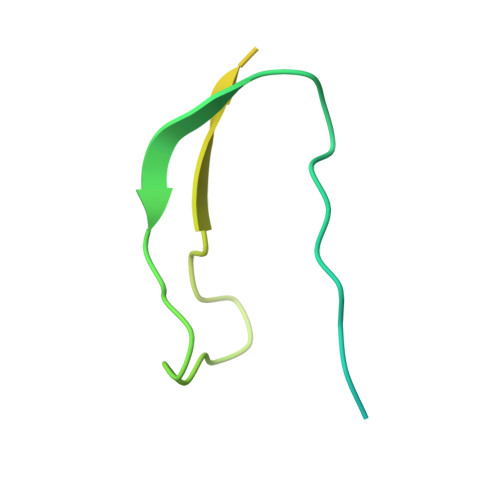Structural impact of human and Escherichia coli biotin carboxyl carrier proteins on biotin attachment.
Healy, S., McDonald, M.K., Wu, X., Yue, W.W., Kochan, G., Oppermann, U., Gravel, R.A.(2010) Biochemistry 49: 4687-4694
- PubMed: 20443544
- DOI: https://doi.org/10.1021/bi901612y
- Primary Citation of Related Structures:
2JKU - PubMed Abstract:
Holocarboxylase synthetase (HCS, human) and BirA (Escherichia coli) are biotin protein ligases that catalyze the ATP-dependent attachment of biotin to apocarboxylases. Biotin attachment occurs on a highly conserved lysine residue within a consensus sequence (Ala/Val-Met-Lys-Met) that is found in carboxylases in most organisms. Numerous studies have indicated that HCS and BirA, as well as biotin protein ligases from other organisms, can attach biotin to apocarboxylases from different organisms, indicating that the mechanism of biotin attachment is well conserved. In this study, we examined the cross-reactivity of biotin attachment between human and bacterial biotin ligases by comparing biotinylation of p-67 and BCCP87, the biotin-attachment domain fragments from human propionyl-CoA carboxylase and E. coli acetyl-CoA carboxylase, respectively. While BirA has similar biotinylation activity toward the two substrates, HCS has reduced activity toward bacterial BCCP87 relative to its native substrate, p-67. The crystal structure of a digested form of p-67, spanning a sequence that contains a seven-residue protruding thumb loop in BCCP87, revealed the absence of a similar structure in the human peptide. Significantly, an engineered "thumbless" bacterial BCCP87 could be biotinylated by HCS, with substrate affinity restored to near normal. This study suggests that the thumb loop found in bacterial carboxylases interferes with optimal interaction with the mammalian biotin protein ligase. While the function of the thumb loop remains unknown, these results indicate a constraint on specificity of the bacterial substrate for biotin attachment that is not itself a feature of BirA.
Organizational Affiliation:
Department of Biochemistry and Molecular Biology, University of Calgary, Calgary, Alberta, Canada T2N 4N1. shannon.healy@tut.fi















